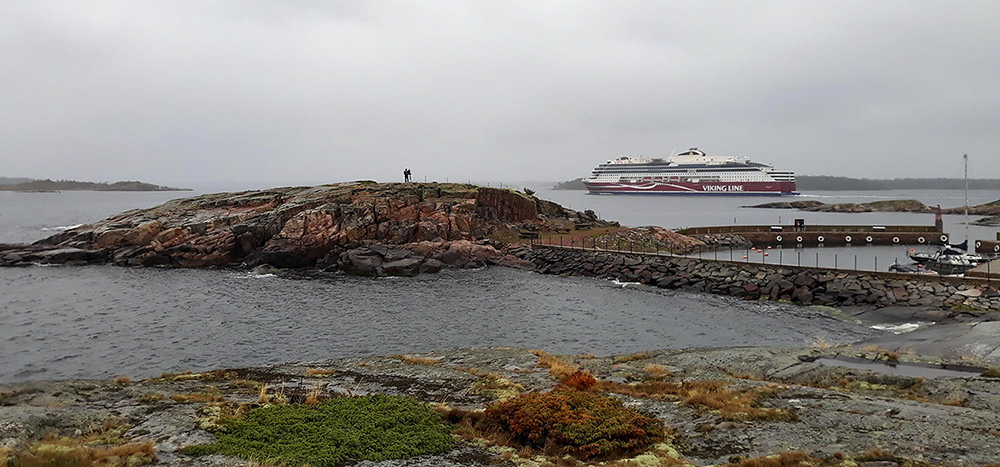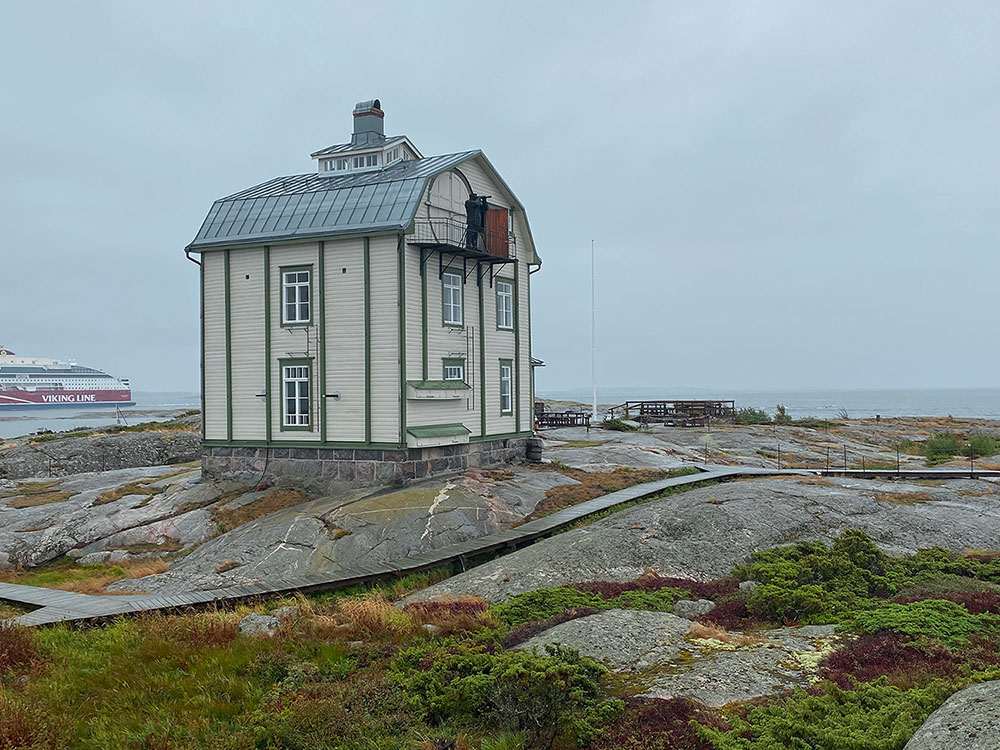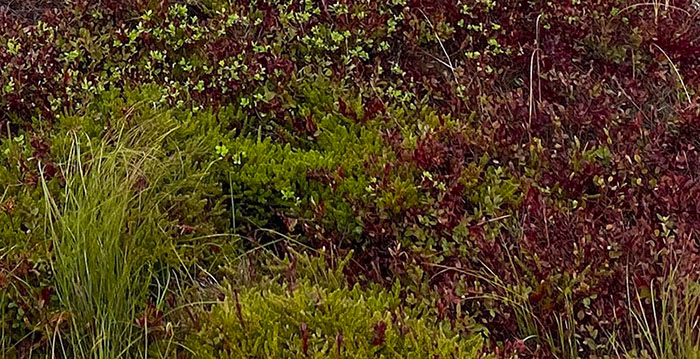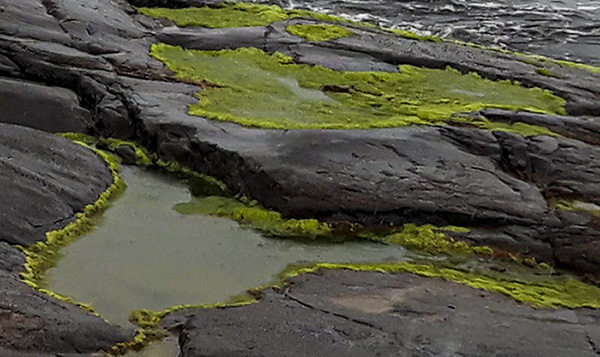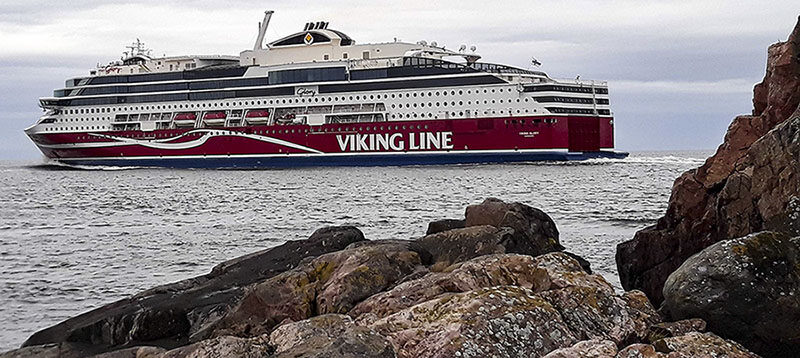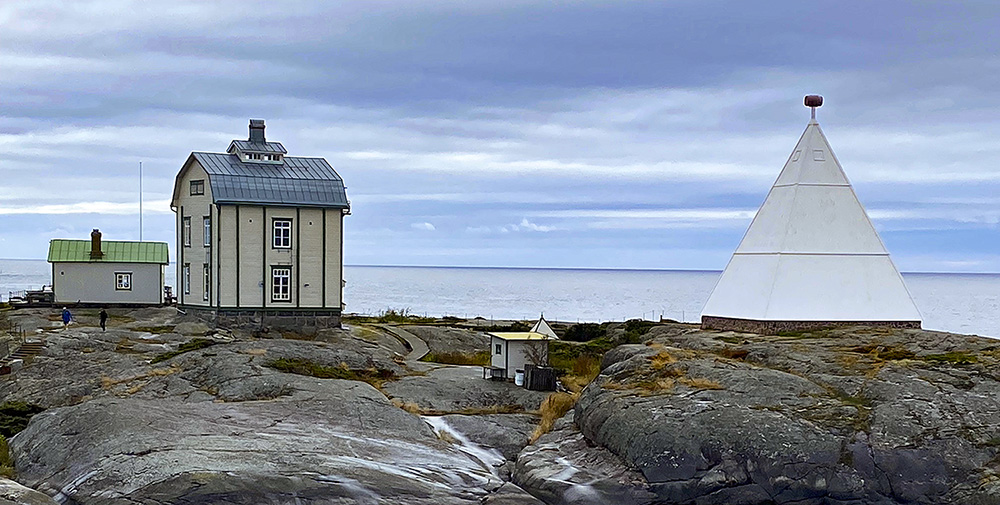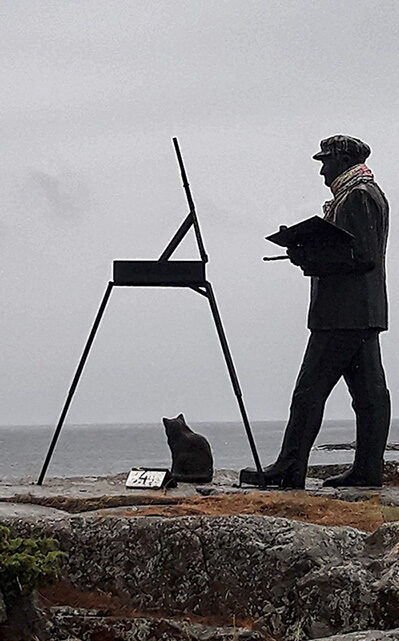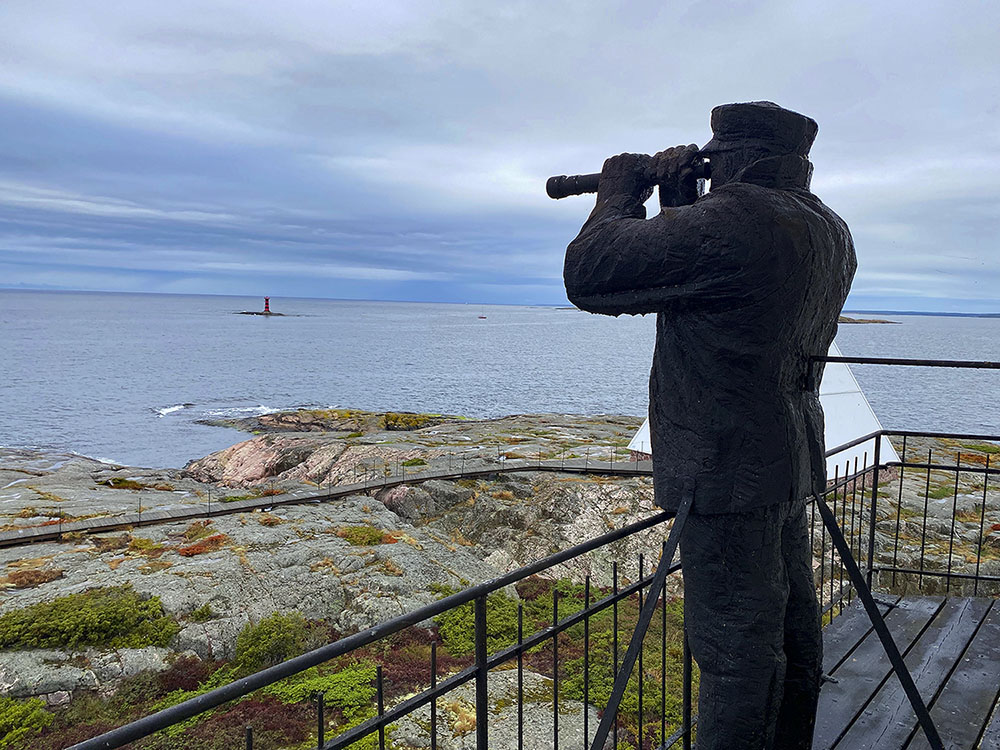Åland Calling, from filmmaker Tiina Mäkinen, was filmed during a conference hosted by The Åland Islands Emigrant Institute in 2022 (read more about the event below). The film follows ten Americans as they return to their families’ roots in Åland (23 minutes).
by Kimberly Jacobs
In August, I was privileged to attend Åland Calling—Come Home to Your Roots, Share and Connect with Us. The program was a weeklong event that Åland’s Emigrant Institute described as, “We plan for a family gathering with all Åland descendants from all over the world…We’d love to introduce you to the Åland of today and historical Åland.”
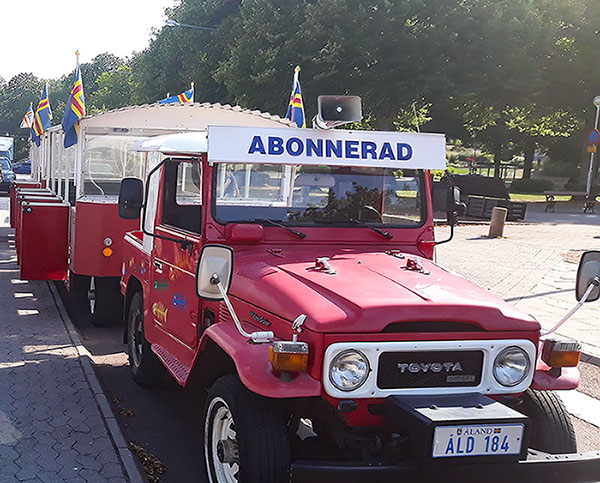
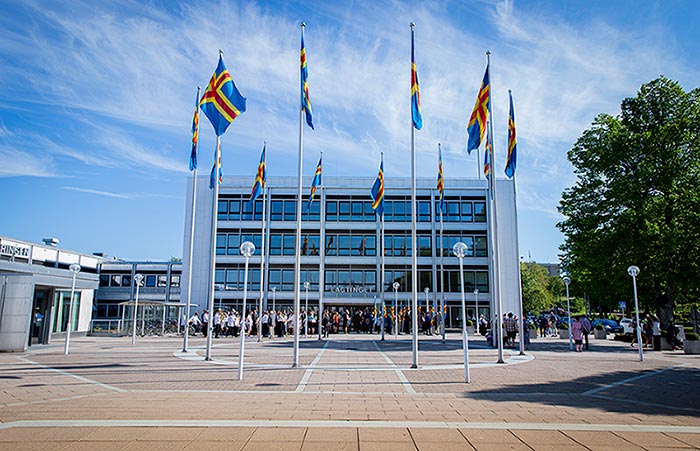 Left: Attendees were greeted at the ferry landing and taken to hotels. Right: The seat of Åland’s government in Mariehamn. Photo by Therese Andersson courtesy of Visit Åland.
Left: Attendees were greeted at the ferry landing and taken to hotels. Right: The seat of Åland’s government in Mariehamn. Photo by Therese Andersson courtesy of Visit Åland.
Day One, Monday, August 15, 2022
We arrive in Mariehamn to a cheery man with a small tram, who immediately greets us as we walk out of the ferry terminal. Within minutes we are in front of our hotel. Our first program begins at 4:00 p.m. with a tour of Åland’s government building.
We learned that despite being part of the European Union, Åland does not participate in the EU’s tax and excise duty program. This creates a tax border, allowing the ships that stop in Åland to sell goods duty-free onboard. The ships are essential to Åland’s economy and this arrangement ensures the ships stop in Åland. In 1966, four charitable organizations formed a licensed gaming business, Paf, to raise funds for the benefit of society. Today they operate slot machines, live bingo, table gaming, and more on 31 ships sailing in the North and Baltic seas. Since its formation, Paf has distributed more than €360 million to organizations in Åland.
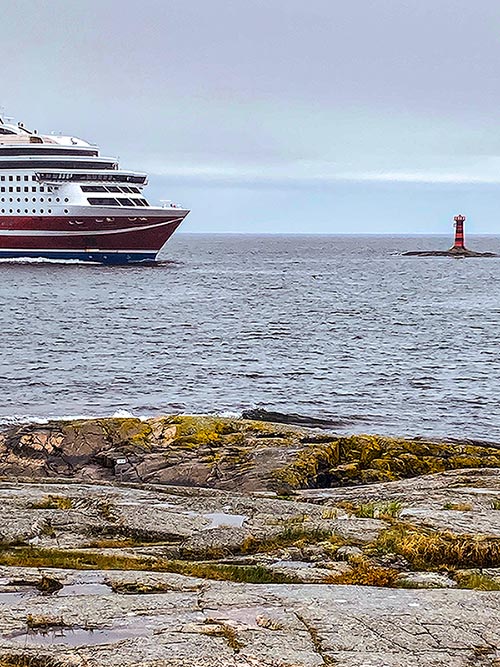
Day Two, Tuesday, August 16, 2022
Speakers
Christer Kuvaja
Director of Research, Society for Swedish Literature in Finland
Language and Society: Heritage from the Swedish Era in Finland’s and Åland’s History
Åland Society During the Russian Era
Kari-Matti Piilahti
Executive Director, Finland’s Family History Association
A Short Glimpse into the History of the Åland Islands: Surnames, Inheritance, etc
Petra Hakala
Senior Archivist, Society for Swedish Literature in Finland
Åland Collections in the Archives of SLS
Highlights
Åland had a sizable population as early as 500 CE, before Sweden was an empire. Sweden and Russia contested the territory for centuries. In the 1880s, sixty percent of Åland’s population were farmers and fisherman. By 1900, the percentage had fallen to thirty-five. The Society for Swedish Literature in Finland has 450 collections concerning Åland in their archive!
Russians began construction of Bomarsund Fortress in 1832, and was still under contruction in 1854, when French and British forces attacked. Design flaws left the fortress vulnerable to attack over land and the cannons they had installed were too heavy to move quickly. Russia had also assumed that war ships could not enter the shallow strait near the fortress. While sailing ships could not enter, British steamers were able to enter and attack.
Kastelholm Castle was built circa 1380 on a small island surrounded by moats. It is the only medieval castle in Åland. Swedish King Gustav Vasa used it as a hunting castle. Laws permitted only the King and the Kastelholm governor to hunt on castle grounds. Later his son, King Johan III, kept his brother Erik imprisoned at Kastelholm. During the fifteenth century the Kastelholm witch trials took place and resulted in the execution of six women. In the sixteenth century Kastelholm developed a shipyard with fifty shipwrights employed. In the 1700s, it served as a prison. In the twentieth century, local farmers used it for grain storage and a quarry. The castle has been captured, recaptured, and under seige many times during its history, including when Charles IX of Sweden captured Kastelholm in 1599, severely damaging it.
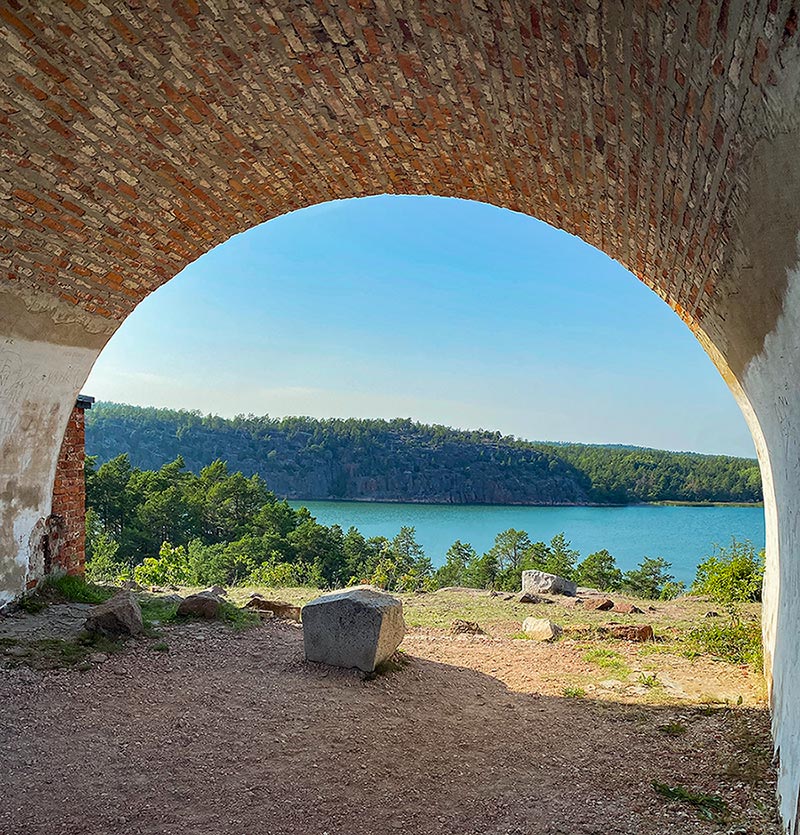
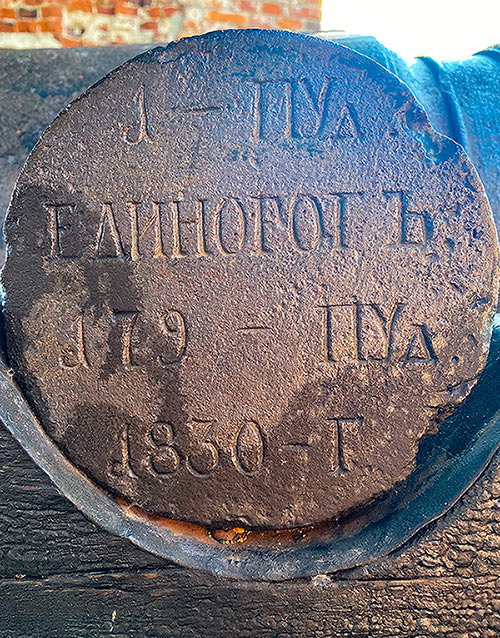
Left: The view through an archway in Notviken Tower of Bomarsund Fortress. The tower was heavily damaged by British artillery. Above: Engraving on a Russian cannon. Below: View from Notviken Tower of the archipelago. Below left: Damage to fortress wall from British artillery. Below right: The survivng arches of Notviken Tower. Most of the fortess was destroyed by British Forces.
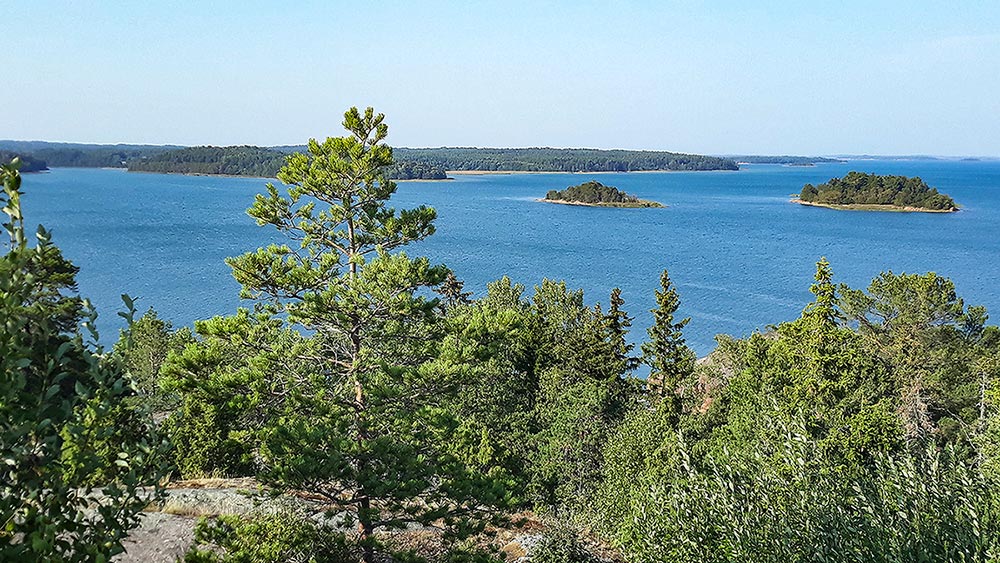
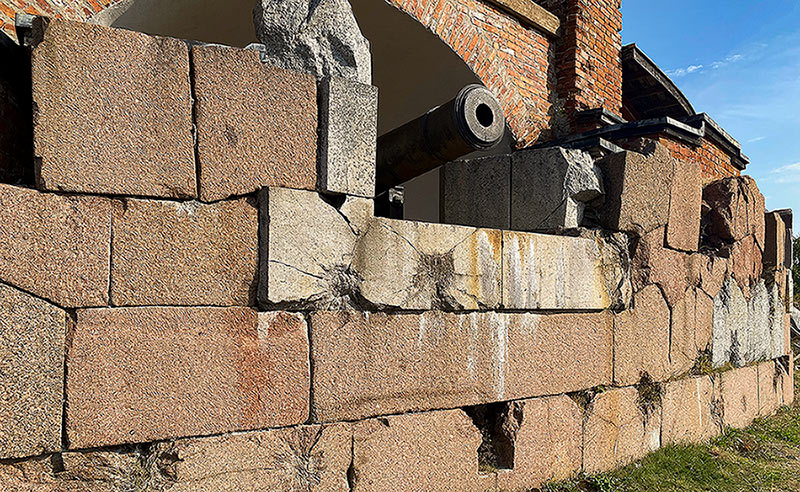
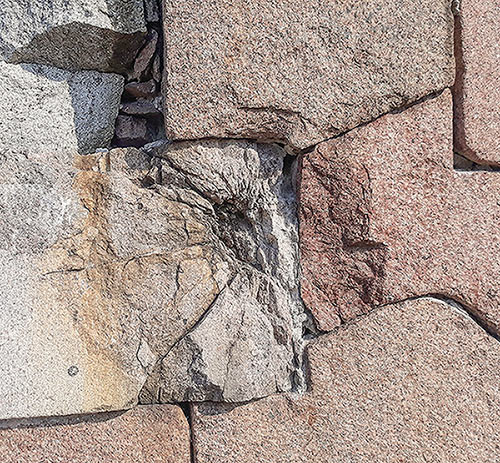
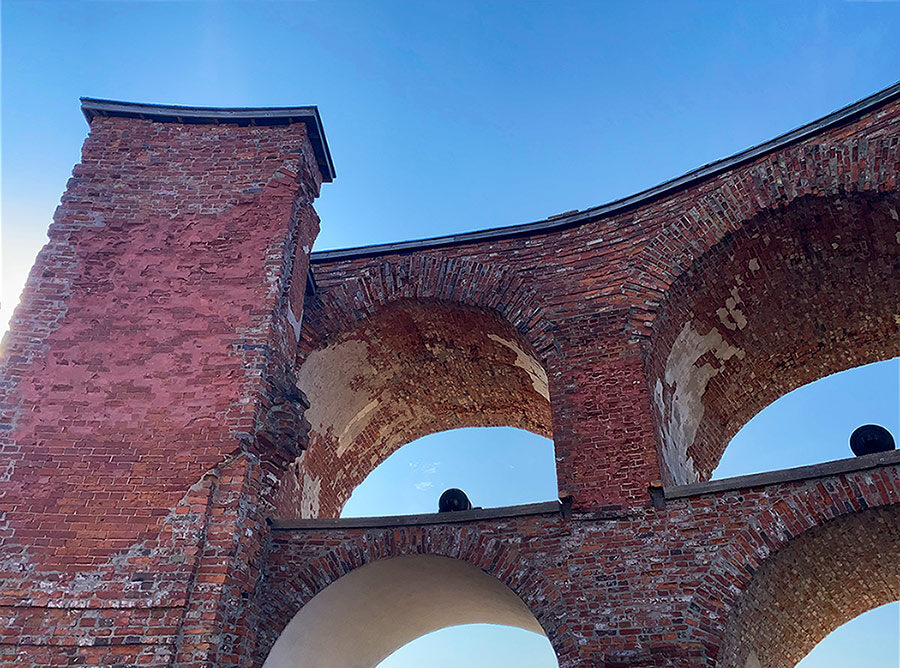
Day Three, Wednesday, August 17, 2022
Speakers
Maria Enckell
Research Fellow, Genealogical Society of Finland
Emigration from Åland: East to the Russian Empire
Susanne Österlund-Pötzsch
Archivist, Society for Swedish Literature in Finland
Migration from Åland to N. America & Sweden: Stories from the Archives
Björn Rönnlöf
Historian, Sottunga, Åland
How to find our Emigrants in America.
Kari-Matti Piilahti
Executive Director, Finland’s Family History Association
Finland’s Family History Association—A Presentation
Highlights
The Alaskan Russian Greek Orthodox Church Records were given to the U.S. Library of Congress in 1927. In 1979, the State of Alaska and the Library of Congress funded a project to describe, organize, and microfilm the collection. The 401 reels are in several libraries around the country and can also be accessed via interlibrary loan. The collection covers 200 years, from the 1730s to the 1930s.
Finnish privacy laws allow the availability of death records after fifty years. Most Finnish records are not available until 100 years have passed. Ministry of Foreign Affairs records contain deaths from abroad—a good resource for hard to find ancestors!
Georgetown, Connecticut had a large Ålandic population, most from Sund and Saltvik. Bethlehem Swedish-Finnish Evangelical Lutheran Church was established by fifty-two charter members, fifty of which were from Åland.
Sightseeing
Pellas Shipmaster’s Homestead
Önningeby Museum
Önningeby Homestead Society
Pellas Shipmaster’s Homestead
The homestead was built in 1884 by Erik Petter Eriksson. He had inherited the debt-ridden farm when he was only fifteen. Surrounding farmers thought Erik would sell and they would acquire some inexpensive land but Erik was able to persuade his creditors to wait for payment. He became a shipowner and by 1874 he was the main owner of ten ships. The main building at Pellas is an impressive family home and a fantastic museum. The building was damaged by fire in 2005 and had to be meticulously restored, including hand-painted wallpaper, and reopened in 2008.
Önningeby Museum
In 1886, Viktor Westerholm founded an artists’ colony in Önningeby, Jomala. Landscape painters from Finland, Sweden, and Estonia came to the colony and brought Impressionism with them. This is the inspiration for the Önningby Museum. The museum was founded in 1992 and occupies an old stone barn. It has an impressive collection of the art from the Önningeby colony. The art, along with extensive research, contributes to a well-crafted story of the artists’ colony. The museum is the only museum in Finland that is member of the European Federation of Artist Colonies. The director, Kjell Ekström, is a painter himself and on the board of Euro Art, an artist colony association. Currently several of the works in their collection are being shown at Prins Eugen’s Waldemarsudde Museum in Stockholm.
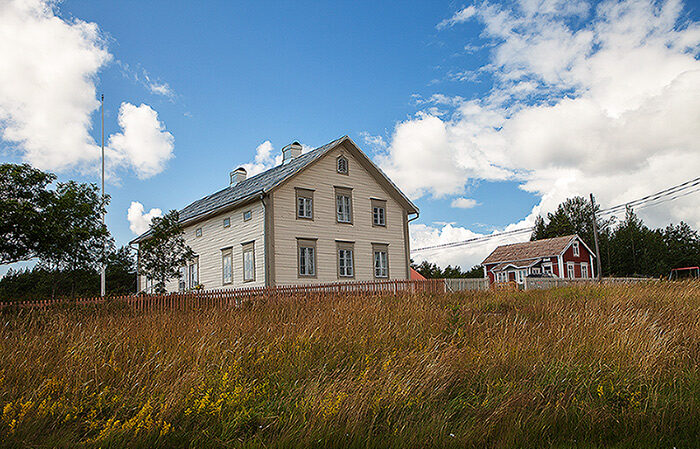
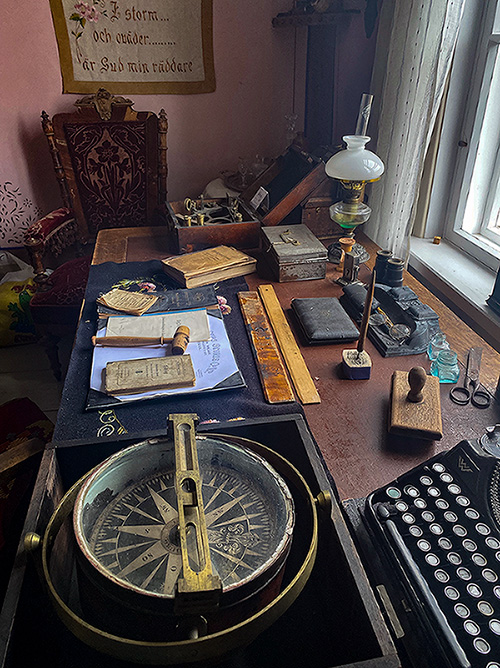
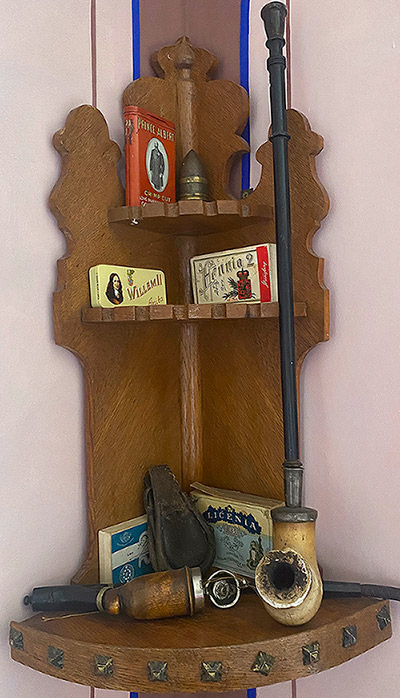
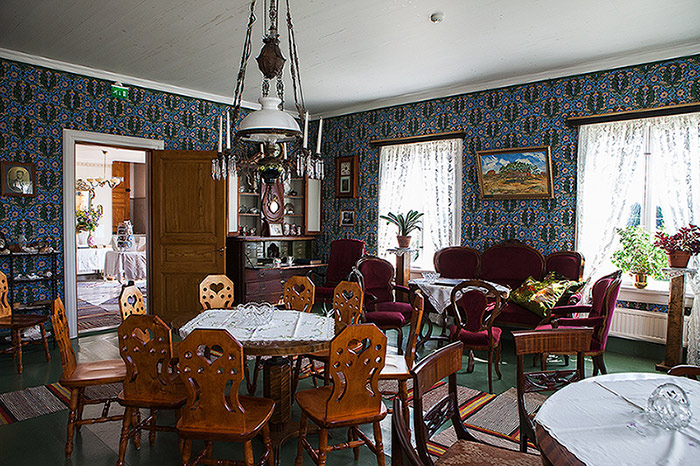
Above left: Pellas Shipmaster’s Homestead, built in 1884, damaged by fire in 2005, and reopened in 2008. Above right: Erik Petter Eriksson’s desk is filled with the trappings of a sea captain. Photo by Tiina Tahvanainen, Visit Åland. Left: Pipes from the 19th and 20th centuries. Above: Handpainted wallpaper adorns the Eriksson home. Photo by Tiina Tahvanainen, Visit Åland.
Önningeby Museum is located in an old stone barn in Jomala, Åland. Photo by Tiina Tahvanainen, Visit Åland.
Day Four, Thursday, August 18, 2022
Speakers
There were no speakers today. The day was set aside for meeting family, visiting farms, and cemeteries. The attendees spread out across the islands as they stepped into their ancestors’ shoes. The Johnson family, from Florida, allowed me to tag along with them to see the home of their grandfather. The trip included two different boats!
Highlights
My family comes from Karleby but my grandfather’s first cousin bought a farm in Lemland, Åland. Karl Andreas Benjamin Gripenberg, or Benni as we called him, died in 1987 but he had a son, Mårten, that I had never met. I wanted to find Mårten, see Benni’s farm, and visit his grave. A volunteer with Åland’s Emigrant Institute, Maj-Len Lindholm, was a retired journalist and told me, “I know the people that live on his farm. We will go there this afternoon. I will pick you up after lunch.”
And she did. The family was waiting for me when we pulled into their driveway. I received enthusiastic hugs and they told me the story of how they became the owner’s of the farm. They had been good friends with Mårten and when he became ill with cancer they took care of him. When Mårten was close to the end he moved in with his neighbors, where he died on Christmas morning. It was after Mårten’s death that they found he had left his farm to them. It was so nice to hear that he was cared for at the end and that he obviously loved them very much. The visit gave all of us closure.
In the late afternoon we visited the Bomärket Museum or Museum of Owner’s Marks. The museum, started by Göran Dahl, has the world’s largest collection of owner’s marks. The marks were simple pictograms that served as signatures or a way to mark possessions. They could be read from any direction. If a mark was added to the owner’s mark, it became a new mark separate from the former mark. This could happen when the next generation took over the farm. The use of owner’s marks subsided as more of the population learned to read and write. The use of initials replaced the use of owners’ marks. The museum is open by request and Göran is happy to tell the history of owners’ marks. I highly recommend it!
Sightseeing
Åland’s Museum of Photography
Museum of Traditional Åland Owners’ Marks
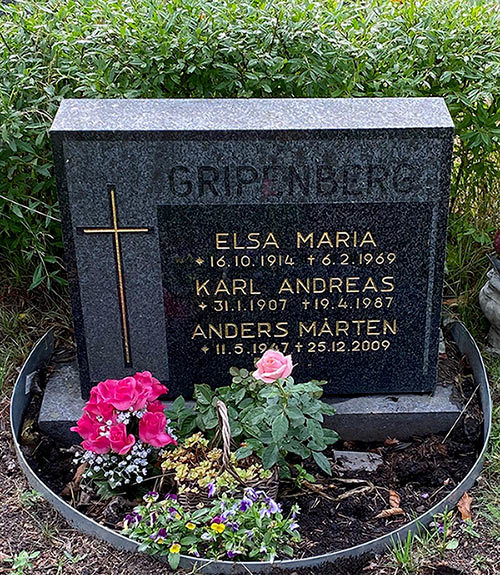
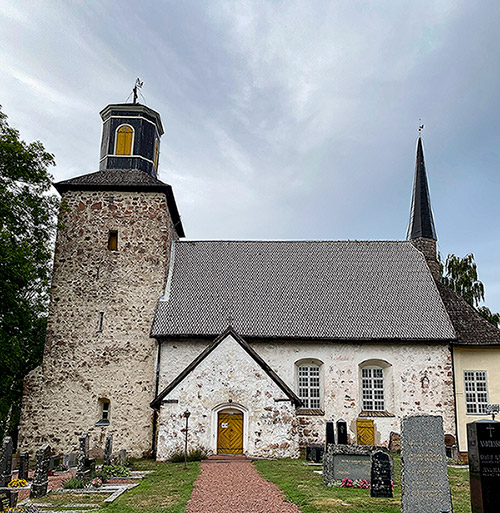
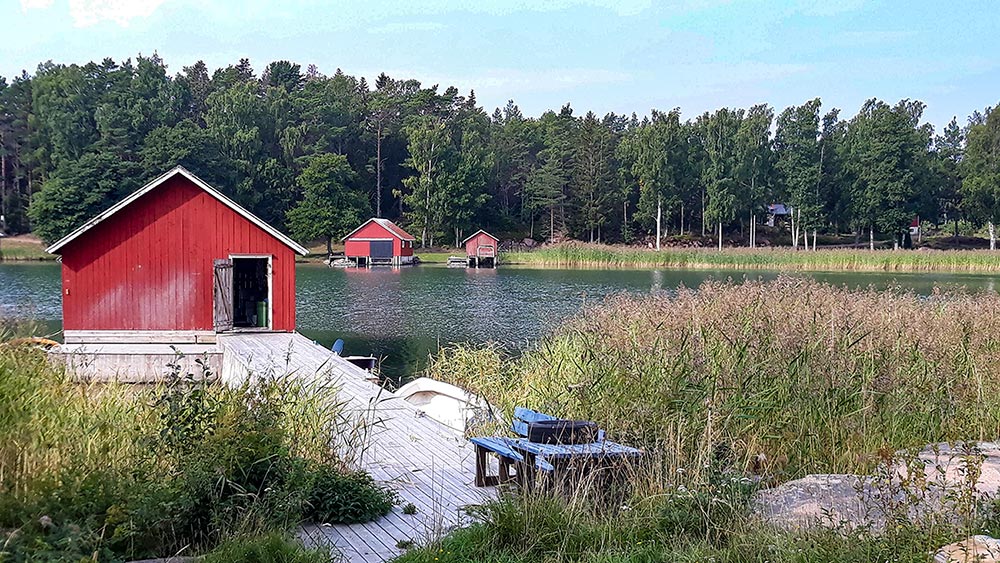
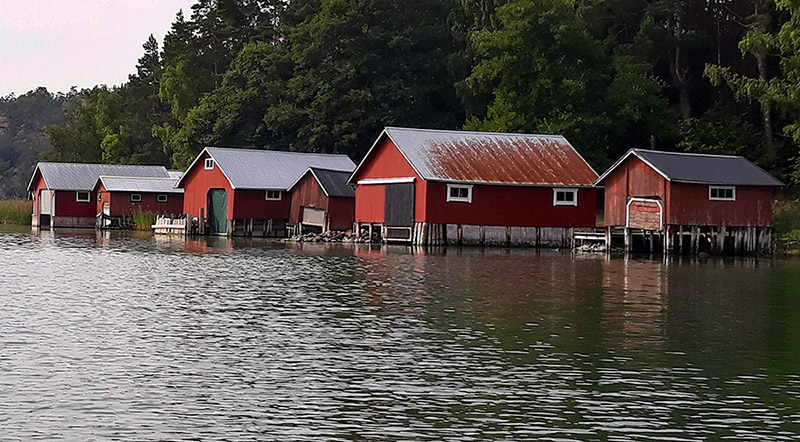
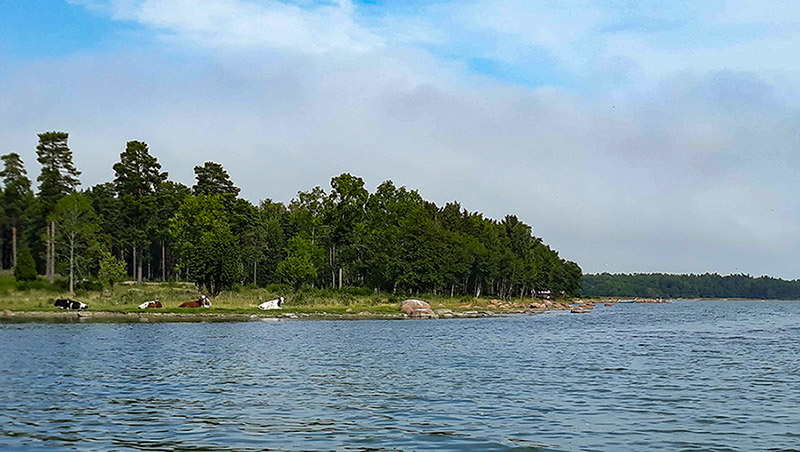
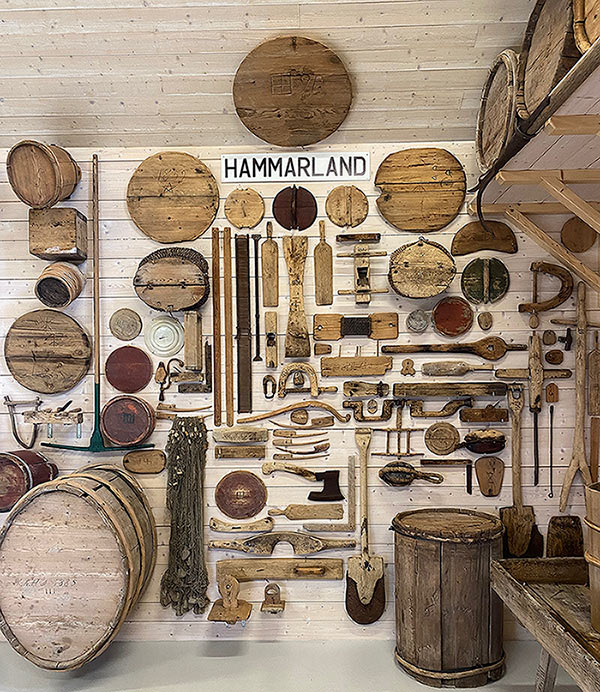
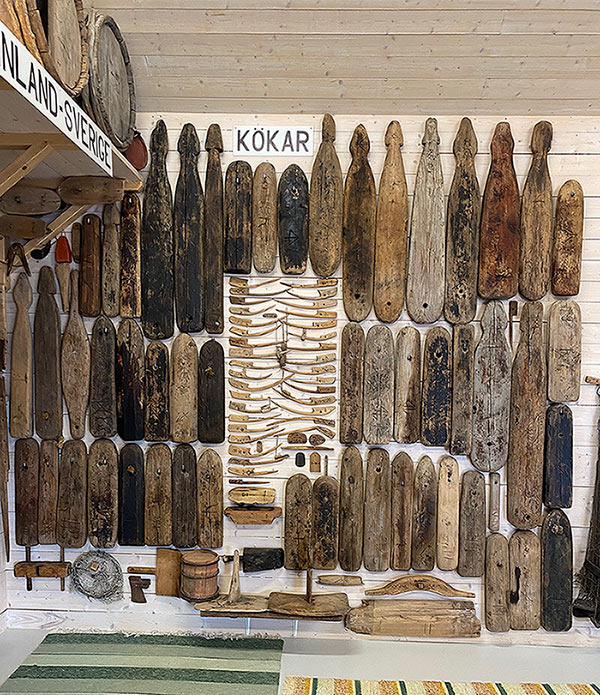
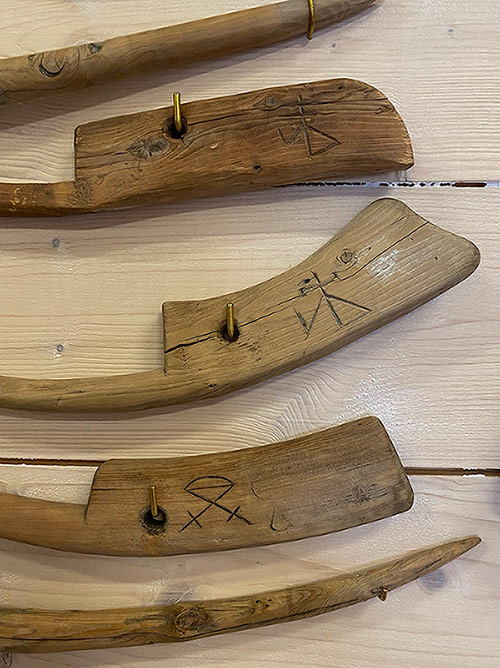
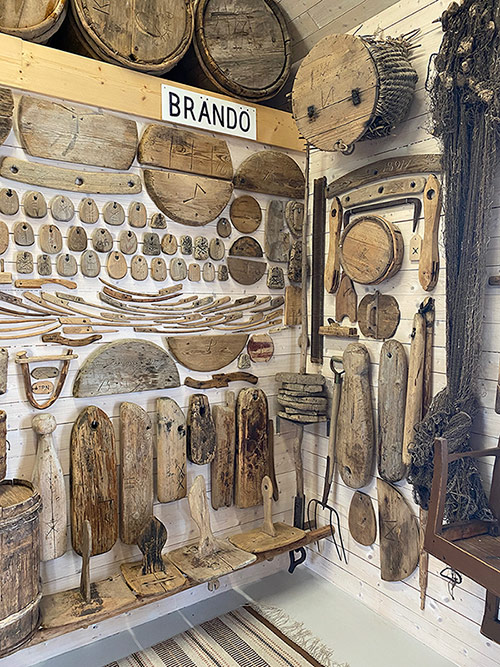
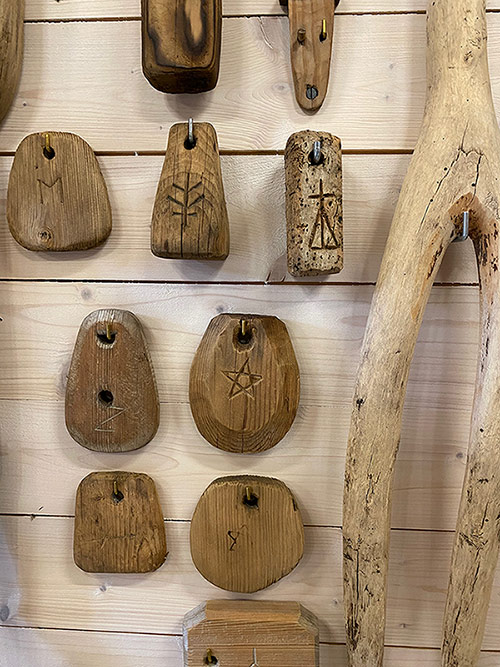
Day Five, Friday, August 20, 2022
Speakers
Björn Rönnlöf
Historian, Sottunga, Åland
Family History Research: Covering the Åland Islands
Family History Research: Covering Sweden & Finland
How to Trace Our Emigrants Who Found Their Way to Australia
Kimberly Jacobs
Executive Director, Swedish Finn Historical Society
Presentation of The Swedish Finn Historical Society
Sightseeing
Ferry to Föglö
Föglö Church Tour
Haddon Sundblom Farm
Hjördis Sundblom Farm
Ferry to Mariehamn
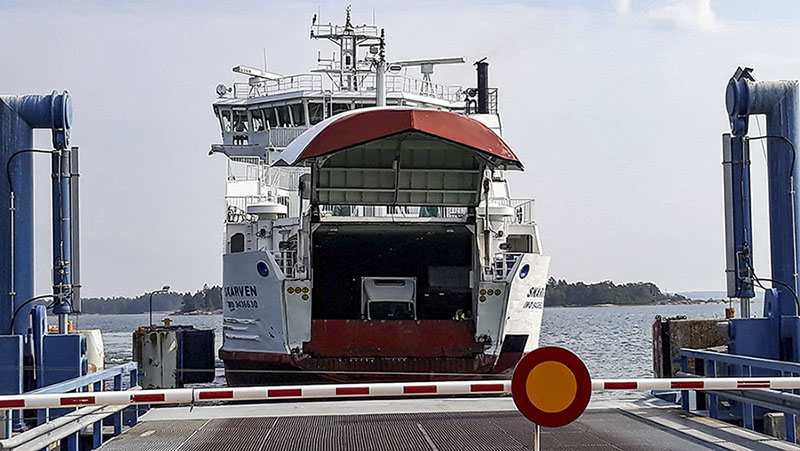
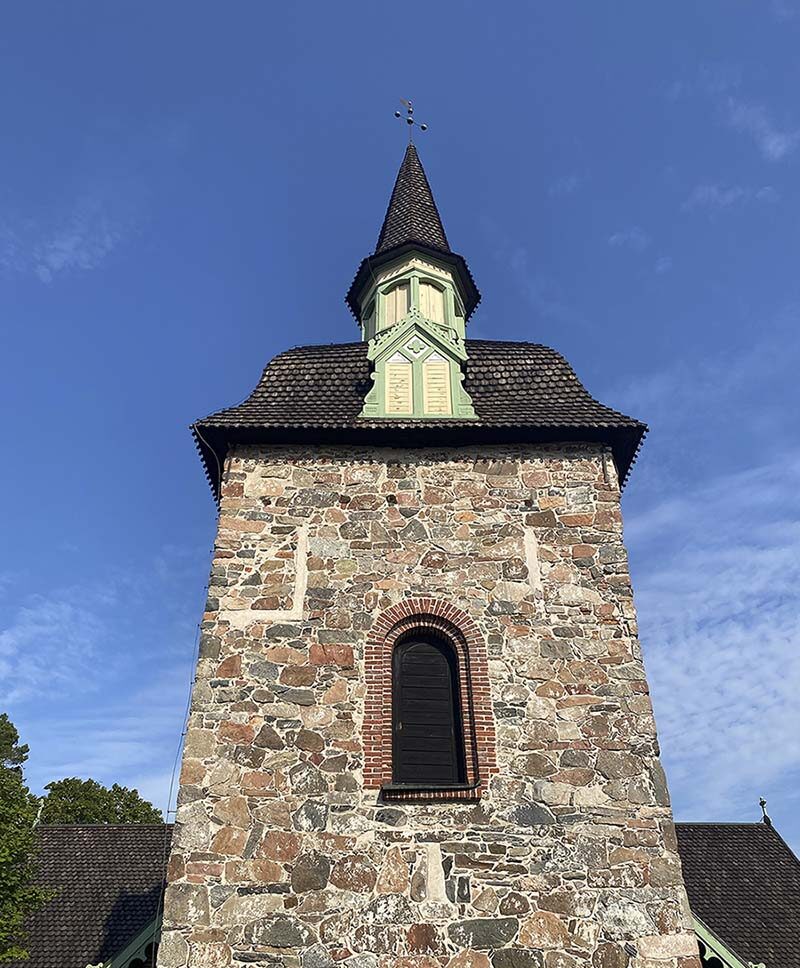
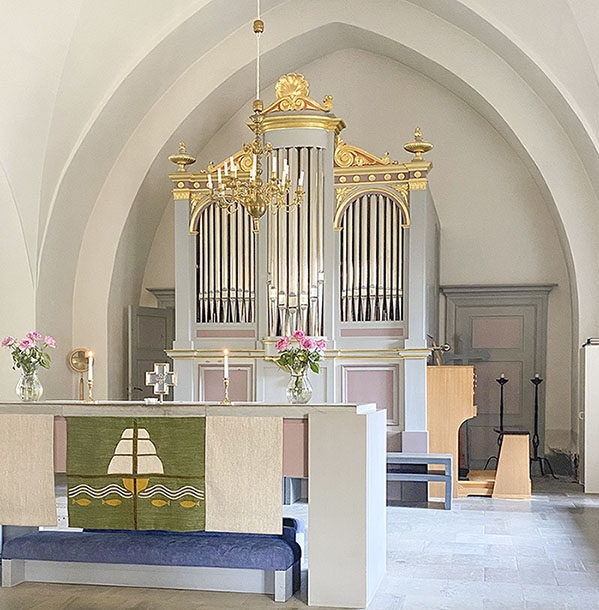
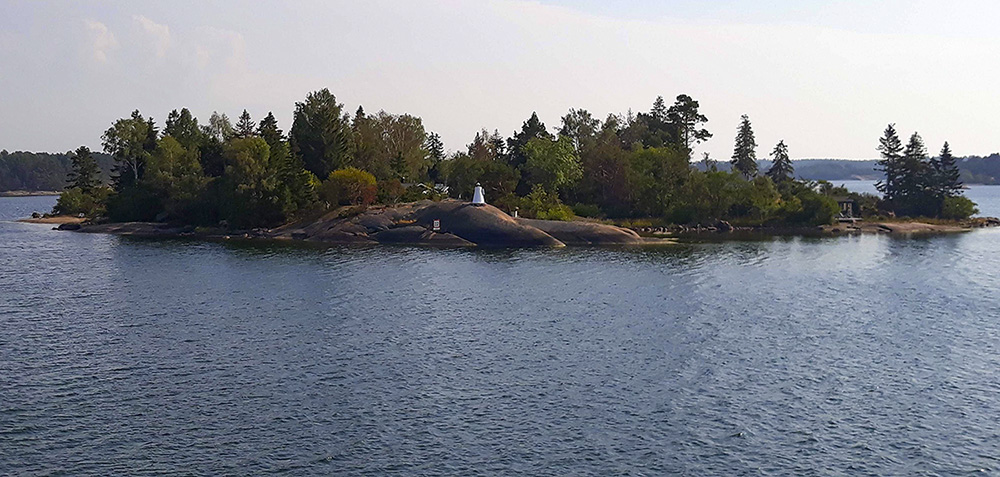
Day 6, Saturday, August 20, 2022
Speakers
Marcus Lindholm
Marine Antiquarian, Cultural Agency of Åland
Seafaring on the Åland Islands
Anna Grönholm
Antiquarian, Åland Maritime Museum
What the Seaman House and Crew Records Reveal
Highlights
The first seaman house was established in Åbo in 1753. The purpose was to give social security to injured or elderly seamen. Each house had a register for seamen looking for work and they tracked seaman that violated rules or laws. A sailor is only recorded in the register of his home port seaman house. The seaman house in Mariehamn was established in 1874. After a journey the captain would leave records of the journey with the seaman house. The captain’s log is where you can locate information about sailors jumping ship. Passenger records can be found in the owner’s log.
Runar Husell, a sailor born in Vårdö, Åland, built a fully functional model of the ship Ponape while he was a prisoner of war. Husell had no tools or supplies. He used steel from a broken bed in the prison. Watch a short documentary about his experience here.
Sightseeing
Pommern Sailing Ship
Åland Maritime Museum
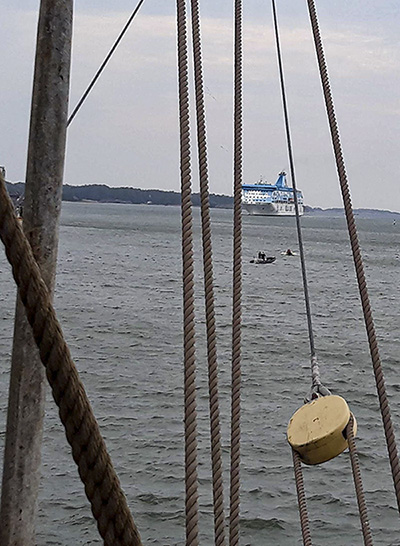
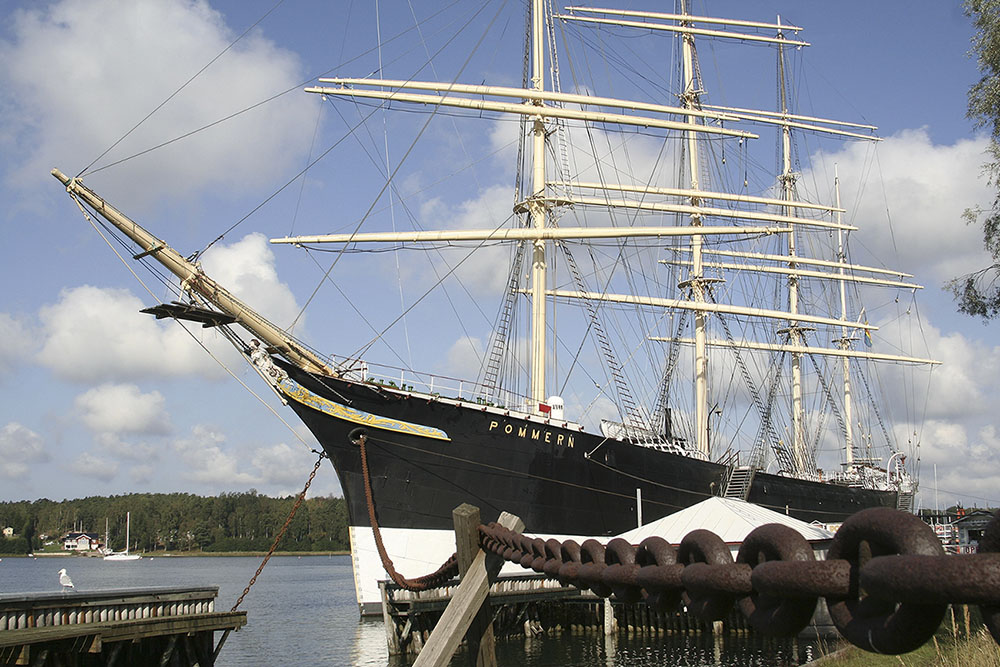
Sailing ship Pommern docked at Åland’s Maritime Museum in Mariehamn. Photo courtesy of Visit Åland.
Day 7, Saturday, August 21, 2022
Today, there is only one activity—we are going to Kobba Klintar! The former pilot station lies on a lonely island close to the Mariehamn harbor. There are no trees but the island is covered in richly colored lichens and heather. Today, it is cared for by a nonprofit organization called Friends of Kobba Klintar. Volunteers stay on the island free for a week, trading work for room and board. Visitors can buy lunch at the cafe and enjoy ship spotting. Or you can bring a picnic. They even have a room available for meetings or events.
